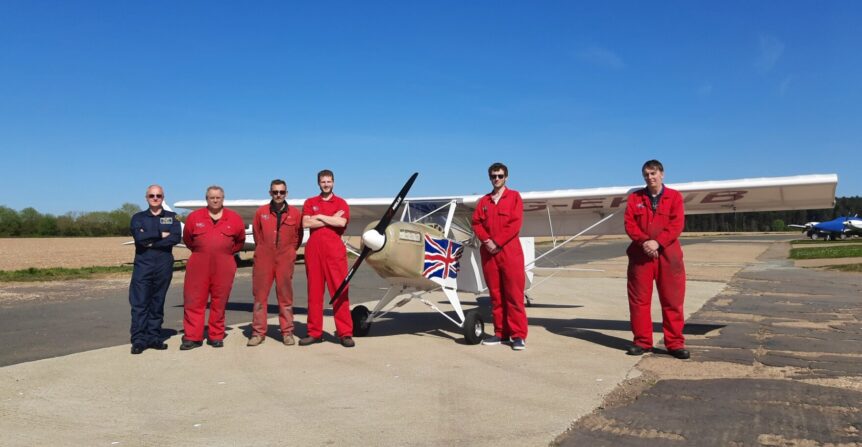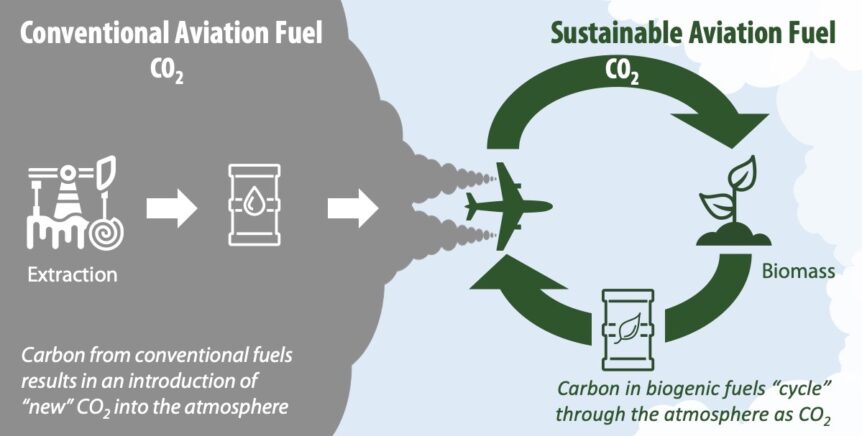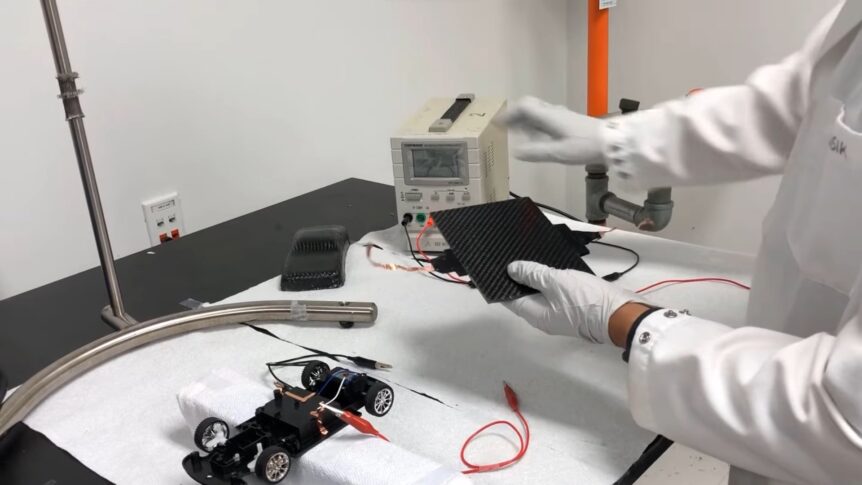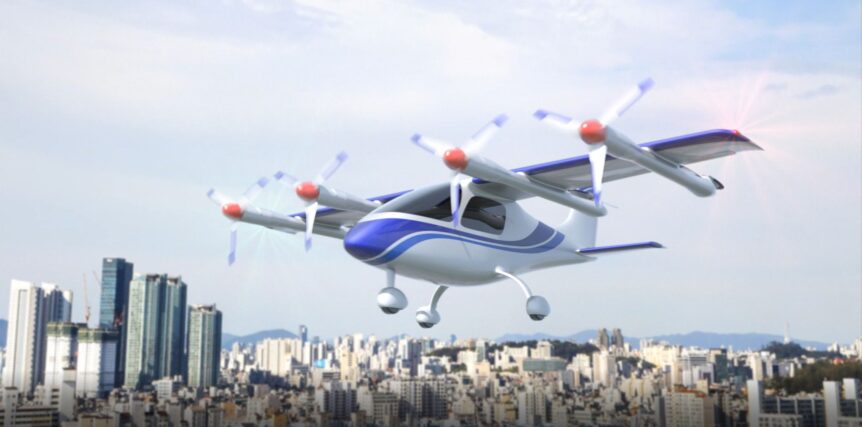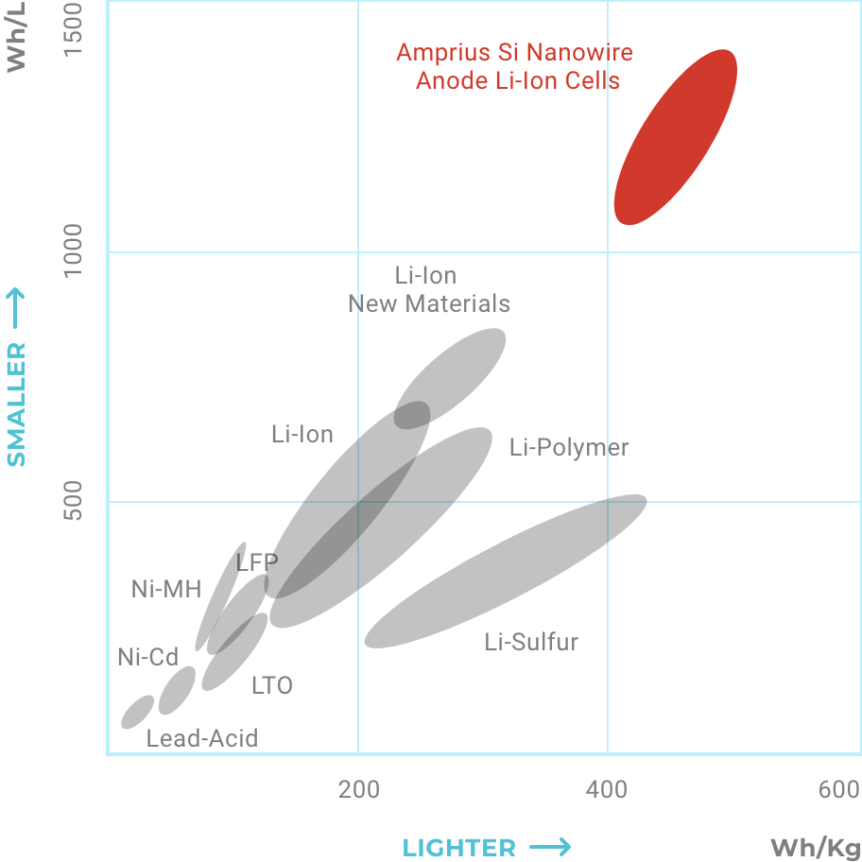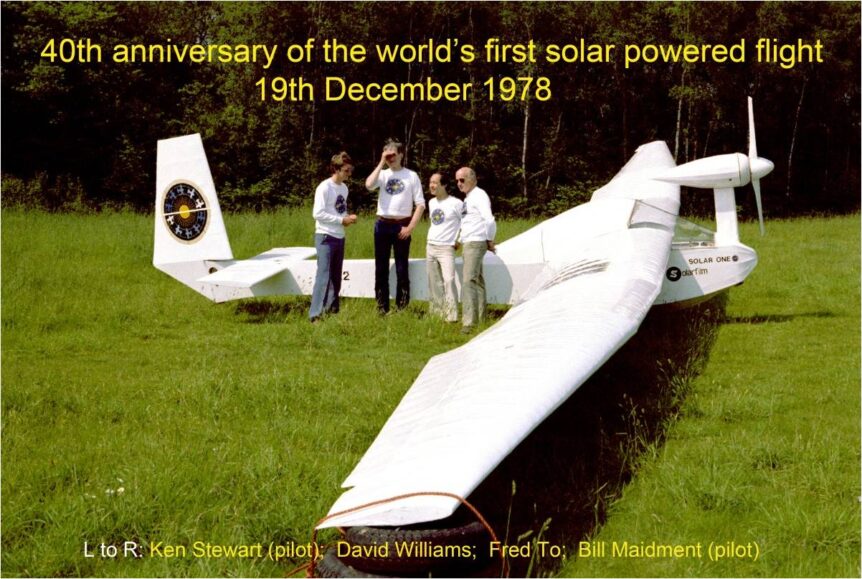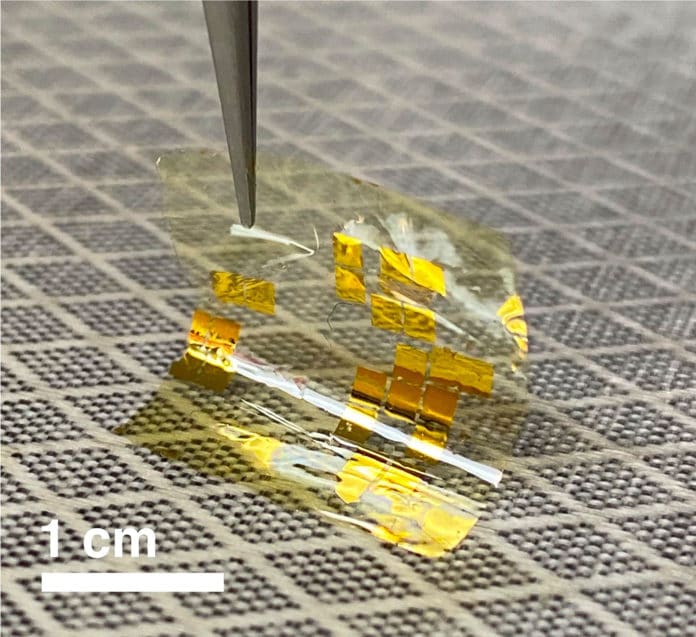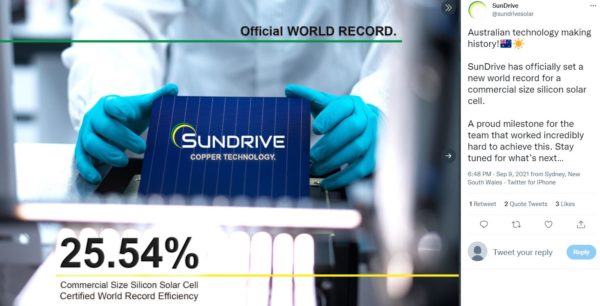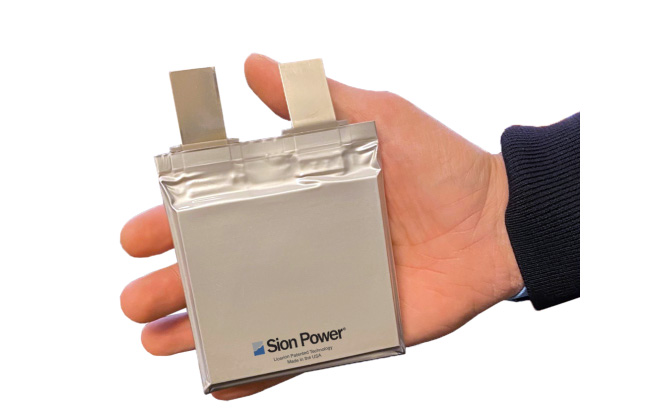A Proper British Aeroplane eKub is the latest offering from The Light Aircraft Company (TLAC), a British company that specializes in modern adaptations of classic-themed flying machines. At nearby Cranfield University, Dr Guy Gratton, Associate Professor of Aviation and the Environment, teaches and acts as test pilot on the eKub. Gratton is also an Associate Fellow of the Society of Experimental Test Pilots. TechXplor reports, “After taxi tests and “low hops,” the single seat Sherwood eKub made its first flight of 10 minutes and then a second flight later in the day of 22 minutes from Little Snoring airfield in Norfolk.” He can’t seem to get enough of the little ultralight single seater, posting a Tweet showing his takeoff in G-EKUB. He reports, “Back in the electric office today, more lessons learned, more progress towards practical and viable electric aeroplanes.” In response to a reader’s question about battery limits on flight time, he explains, “Looking increasingly that we’ll hit our …
Cementing Sustainable Aviation Fuel (SAF)
Cement, a prime component in concrete, is a major source of the greenhouse gas CO2, according to the Princeton Student Climate Initiative (PSCI). The group reports, “Cement is made by firing limestone, clay, and other materials in a kiln. CO2 is emitted from the energy used to fire the material, and the chemical reaction produced from the mixture when it is exposed to heat. According to the National Ready Mixed Concrete Association, each pound of concrete releases 0.93 pounds of carbon dioxide. Since concrete is such a widespread item, the amount of CO2 released in the industry continues to grow.” Cleaning Up the Process How can cement makers reduce their contribution to global warming and make sustainable aviation fuel (SAF)? The question may seem ludicrous at first glance, but CEMEX, a worldwide manufacturer of cement, has successfully deployed hydrogen-based technology to reduce CO2 emissions in its operations. Tested in Spain in 2019, hydrogen is now a part of all European …
A Hybrid Structural Battery
Is it possible to combine the best features of batteries and supercapacitors to get both enduring energy storage and bursts of power? Batteries, to varying degrees can store energy and release it over time. Supercapacitors can provide instant, but short-lived power. Even more challenging, can can we form a hybrid structural battery, combining form with function? University of Central Florida researchers think they’ve answered those questions with a battery-supercapacitor hybrid material that could form “power suits” for electric vehicles. Improving on an Earlier Idea This blog first reported on structural batteries 12 years ago, examining the efforts of Volvo and Dr. Emile Greenhalgh of Imperial College London. Several approaches have been made to create a structural battery, but the “power suit” combines electrical potency with enough structural strength to resist driving impacts. UCF reports, “This new breakthrough continues this line of thinking, with scientists at University of Central Florida and NASA designing a new material featuring unique properties that allow for …
Single-Seat eVTOL Commuters
Single-seat ultralight aircraft are a popular part of personal aviation and a small part of the growing electric Vertical Take Off and Landing (eVTOL) market. We look at two contenders here, and compare them to a newly-certificated single-seat fixed-wing solar-assisted airplane. KARI’s QTP-UAV KARI – the Korean Aerospace Research Institute – has developed the QTP-UAV, or Quad Tilt-Prop Unmanned Aerial Vehicle. It’s designated as yet another acronym – OPPAV, Optionally Piloted Personal Air Vehicle Technology Demonstrator. Citing the “Emerging market competition for urban air mobility,” KARI sees their craft as a means to reduce the “enormous social costs resulting from traffic increase on the ground.” A huge number of Korean organizations joined the effort develop the OPPAV demonstrator. “Korean companies (KAI, Hyundai Motors, Hanwha System, VesselAerospace, KAT, Doota, EDT, and RealtimeWave), research institutes (KIAST and KOTI), and Konkuk University formed a consortium for the program sponsored jointly by the Ministry of Land, Infrastructure, and Transport (MOLIT) and the Ministry of …
Amprius Ships 450 Watt-hour per Kilogram Batteries
Your editor’s first outing at an electric aircraft symposium was in 2009. At that meeting, Dr. Yi Cui, Stanford professor and battery expert, talked about silicon and its energy density being so much greater than that for graphite. He predicted huge advances for battery chemistry – and now he’s delivering. His firm, Amprius, is shipping 450 Watt-hour per kilogram batteries. Unlike many such companies, Amprius is not projecting these numbers several years out, but delivering now. According to their February 8 press release, Amprius sent its first batch of the energy-dense cells, “…To an industry leader of a new generation of High-Altitude Pseudo Satellites (HAPS).” Your editor guesses that leader is Zephyr, acquired by Airbus and setting endurance records on solar and battery power since its introduction in 2017. One reached 76,100 feet in a 2021 campaign, spending over 36 days (in two flights) at stratospheric heights and equaling the sailplane altitude record set by the Perlan Project in 2018. …
Electron’s 2024 Round the World Plans
Teofilo Leite has been refining a beautiful twin-motor glider for the last decade. Apparently he’s moving on to a five-seat, four-motor, dual-propeller beauty that is set to take on the world. The Electron 5 looks a great deal like a larger Electron 2, which has been flying in various configurations for the last decade. Electron Aviation, with representatives in The Netherlands and Australia states, “Our Electron 2, a two-seater battery-electric aircraft (Teofilo’s earlier design), is the flying proof that our energy efficient aircraft designs deliver outstanding performance. Whilst being well within inside the 600-kilogram (1,320 pound) ultralight microlight [regulations], it achieves 3 hours flying time during which it can cover 300 kilometers (186 miles).” Electron 2 flies its pilot and passenger on 7.5 kilowatt hours per hour of flight. Its three-hour endurance would mean a battery of at least 22.5 kilowatt-hours. Continued improvement to the Electron 2 required “30,000 design and engineering hours and several re-designs.” The latest iteration “has …
A Belated Addition to the Fred To Video
Fred To (pronounced “toe”), the first to create and fly a solar-powered aircraft, was the subject of a blog entry in 2018. Fred just informed your editor that the second part of the Solar One video was missing. Herewith, we will rectify that grievous error. It’s worth a second look at the older blog entry, since Fred deserves attention for his pioneering work in solar flight, inflatable aircraft, human-powered aviation, and fly-by-wire technology. The much belated Part 2 includes “the actual solar-powered flights,” as Fred notes below. He added, “I’ve taken a back-seat with the cross Channel competition but still very much in it. We have delayed it till 2023 due to the effects of Covid….” This contest will see contenders from around the world flying across the English Channel in their human-powered flying machines. “I happened upon this very nice article your wrote about Solar One’s celebrations in Switzerland a few years ago and decided to watch the video …
Stanford’s Ultra-thin Solar Cell
We’ve noted here recently that early (and even current) examples of solar-powered aircraft suffered from the low efficiency of the panels that collected sunlight to power them. The panels add weight, and so far, nobody’s flying with more than 29-percent efficiency. What if a different approach, using ultra-thin solar cells covered the entire aircraft? That’s the possibility with Stanford University’s “new, ultrathin photovoltaic materials.” Your Editor’s take on this is that 5.1-percent efficiency now offered by the Stanford solar cells could be applied by wrapping the entire plane, much like car customizers wrap high-end automobiles. That’s occurred to researchers. “Imagine an autonomous drone that powers itself with a solar array atop its wing that is 15 times thinner than a piece of paper,” said Koosha Nassiri Nazif, a doctoral scholar in electrical engineering at Stanford and co-lead author of a study. “That is the promise of TMDs.” TMDs refers to Transition Metal Dichalcogenides. This material is composed of a so-called …
Copper for Solar Cells
Solar cells are older than we perhaps knew, and their efficiency was low in their early development. They were also remarkably expensive. Today, though, materials like perovskite are making new, less-expensive and reasonably efficient cells possible. Swapping copper for the more expensive silver conductors may help make these cells even more rewarding. In a further development, a simple plastic film wrap may make perovskite cells safer. A Long History of Low Efficiency Two dates stand out in Wikipedia’s recounting of solar cell development: 1839 –Edmond Becquerel observes the photovoltaic effect via an electrode in a conductive solution exposed to light. 1883 – Charles Fritts develops a solar cell using selenium on a thin layer of gold to form a device giving less than 1-percent efficiency. Only one Watt would be generated for every kilowatt falling on a one-meter square solar panel. Notice the use of gold helping keep the price of these early cells high. Considering that modern solar cells …
Sion Power’s EV Battery
Sion Power’s EV Battery 400 Watt-hours per kilogram is a long-awaited minimum expectation for what it will take to get electric aviation off the ground. Sion Power® of Tucson, Arizona will introduce its Licerion® 17 Amp-hour pouch cells at the Battery Show North America in September – claiming to fulfill that expectation. The large-format pouch cells come in a compact 810 Watt-hours per liter size, last over 800 cycles and can be charged to 80-percent of their rated capacity in 15 minutes, according to Sion. Sion Power is shifting from its lithium-sulfur chemistry to lithium-metal technology. Their Li-S cells powered Airbus’ Zephyr® 7 HAPS (High Altitude Pseudo Satellite) to a record for continuous flight. According to Tucson Tech, “In 2014, lithium-sulfur batteries custom-made by Sion helped power Airbus’ Zephyr 7 solar-electric unmanned plane to fly for 11 days on sun power during the day and battery power at night.” From Lithium-Sulfur to Licerion® In a paper on the subject, Sion …

